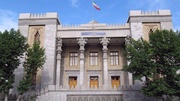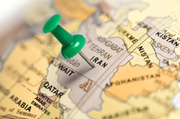A new round of Tehran-Muscat talks will kick off in the Iranian capital on Tuesday aiming to finalize provisions of the natural gas export contract and partnership in LNG projects of the Arab state.
Accordingly, Iran’s Oil Minister Bijan Zanganeh and Mohammed Al Rumhi, Oman’s Minister of Oil and Gas, will meet and discuss existing disputes in the contract for new route of pipeline construction for gas transmission to Oman through Sea of Oman or the Persian Gulf.
The project of transferring gas from Kish field to Oman will cover a 200-kilometer pipeline which for the most part would be located under the water; in the first phase of the project, one million cubic feet of gas will be transferred while by development of other faces this amount will increase to three billion cubic feet per day.
However, the United Arabic Emirates has officially opposed construction of a natural gas pipeline from Iran to Oman in its sovereign waters and the change in the construction route of the pipeline could adversely affect economics of the gas export project.
On the other hand, high-ranking oil officials of Iran and Oman held a joint session on gas exports with representatives Korea Gas Corporation (KOGAS) last year while a Dutch firm has also expressed willingness to participate in the project.
INTECSEA of the Netherlands has made an official proposal to launch partnership in construction of the gas transmission pipeline while the Dutch firm has previously joined hands with Iran in construction of certain submarine pipelines of South Pars field.
Back in 2013, Tehran and Muscat signed into a deal under which Iran will export 1.5 million cubic feet of gas to Oman through a submarine pipeline in the Persian Gulf.
The project covers both onshore and offshore areas each requiring about 200 kilometers of pipelines as well as compression and measurement facilities.
A portion of the gas is expected to be consumed by Oman while the rest will be deployed to target markets via LNG facilities of the Arab country.
The project, for holding great significance, is expected to strengthen Iran-Oman ties and energy ties in the Middle East.
Iranian companies possess the technology for installation of pipelines in shallow waters; nevertheless, given that they have never carried out the project in waters with a depth over 1,000 meters, experience of international firms will be exploited appropriately.
Meanwhile, Iran’s Oil Minister, Bijan Zanganeh, had deemed one of the most important reasons of exporting gas to Oman as participation in LNG retail market; “exporting gas to Oman will provide the opportunity to sell Iran’s natural gas to other countries in particular Asian countries,” he stressed.
Previously, Managing Director of the National Iranian Gas Export Company (NIGEC) said the gas contract with Oman consists of two stages one being basic marine engineering studies for which a contract has been signed and a contractor has been chosen.
He maintained that the next phase would be selection of another contractor to construct pipelines to transfer Iran’s gas to Oman.
Stressing that the pipeline construction process would approximately require two year of time, Kameli asserted, “accordingly, the two countries have agreed that part of the transferred gas will be used by Oman and the rest will be devoted to LNG production.”
On the Iran’s possible share in LNG market after the implementation of the agreement, Kameli noted: “currently, about 25 per cent of Omani LNG production plants’ capacity is empty.”
The official underlined Iran’s plans to dedicate the empty capacity in Oman’s plants to Iranian LNG; “in other words, on the basis of the new agreement the commission costs of Omani LNG plants will be paid by Iran,” he added.
Reminding that Iran will own the produced LNG being in charge of its marketing, he said, “normally, participation in the market will be more convenient for us because the project will be carried out in joint collaboration with Oman which already has its own costumers.”
“The total available capacity at Oman’s LNG plant mounts to 1.5 million tons per year a part of which will be dedicated to Iran,” he concluded.
HA/3898680

























Your Comment